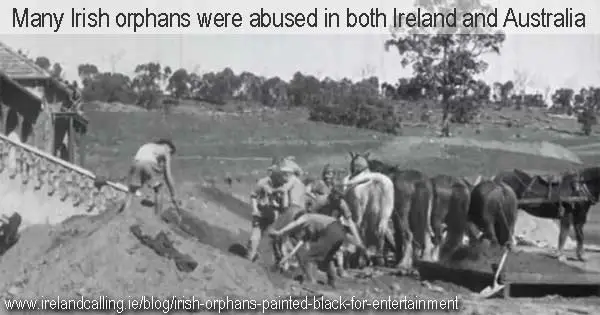Irish orphans who were shipped to Australia in the 1950s were often painted black for the amusement of other passengers.
The inquiry into historic institutional abuse in Northern Ireland heard that children were transported to care homes in Australia without their consent. They often suffered abuse in both countries.

The inquiry was set up by the Northern Ireland Executive and covered abuse of children under 18 who lived in children’s homes, borstals, training schools, juvenile justice centres, hospitals and orphanages between 1922 and 1995 in Northern Ireland. It is now complete and victims may be eligible for compensation.
One witness who appeared before the inquiry was abused in the Termonbacca care home run by the Catholic Church in Derry.
The man, now in his 70s, gave evidence of what he and other orphans were subjected to during their journey to Australia. He said: “Our faces were painted black to make us look like [Indigenous Australians]”.
It was a humiliating ordeal for the orphans but was considered entertainment for paying passengers.
The abuse he suffered in Derry and Australia left him with lasting mental scars. He said: “I had no idea how to parent my children, or even how to cuddle and love them. I really don’t know what love is.”
The public inquiry is investigating the treatment and possible abuse if children in state or church run homes. It is focusing on 130 orphans and other vulnerable youngsters who were sent to Australia between 1946 and 1956.
The inquiry, which is now complete, heard from 66 former residents. One witness said that the abuse got worse when he arrived in Australia and was moved to Bindoon care home. He said: “After Bindoon, Termonbacca turned out to be a holiday camp.”
The compensation scheme run by HIA Redress Board in Northern Ireland is now open for applications.
You may be eligible to apply for compensation if you:
- were resident in an institution (eg children’s home, borstal or training school) in Northern Ireland between 1922 and 1995 (both dates inclusive); and
- suffered or witnessed abuse, or were subject to a harsh environment.
You may also be eligible to apply if you were sent to Australia from Northern Ireland under the Child Migrant Programme.
You can also apply on behalf of someone who died on or after 28 April 1953 if you are the deceased person’s surviving:
- spouse
- civil partner
- cohabiting partner
- child
For further information and to make an application, visit the Northern Ireland historical institutional abuse page
More popular articles and videos
The real life mystery of what Maureen O’Hara whispered to make John Wayne look so shocked
Matt Damon winning hearts and minds with charm assault on Ireland
Action hero Tom Cruise was once attacked by an old man in a Kerry pub
Liam Neeson speaks about his late wife in emotional interview
Dating site explains why Irish men make wonderful husband material
Billy Connolly says public should ignore politicians and listen to comedians
Take a look inside Hollywood star Saoirse Ronan’s stunning Irish home
Ireland Calling Videos
Check out the Ireland Calling YouTube Channel for more great videos like
